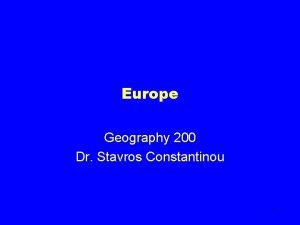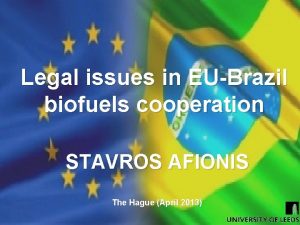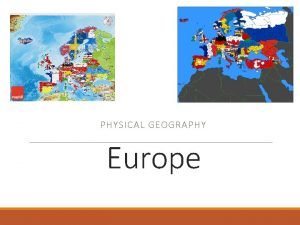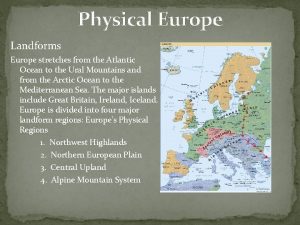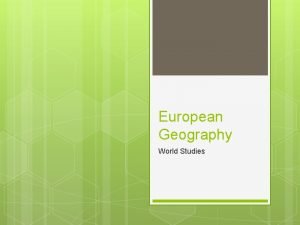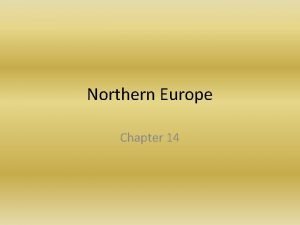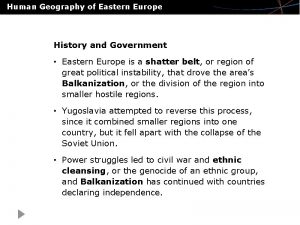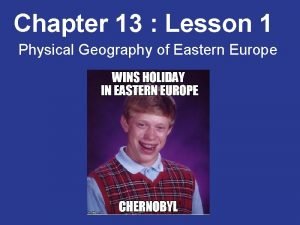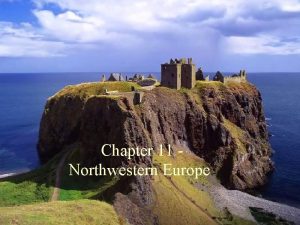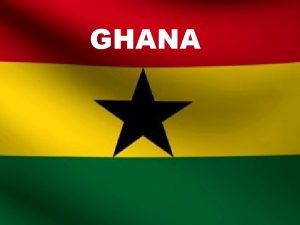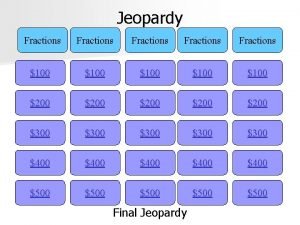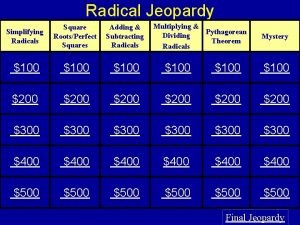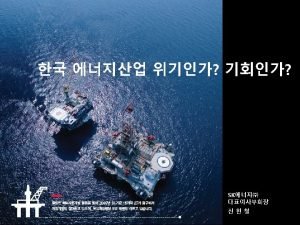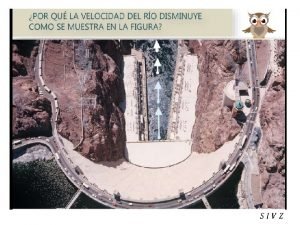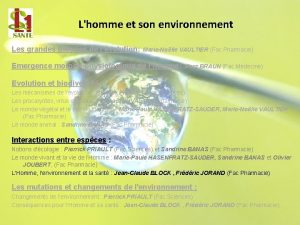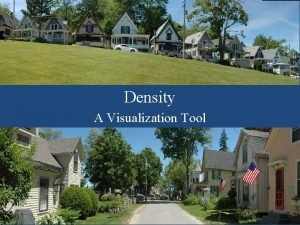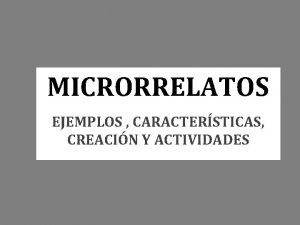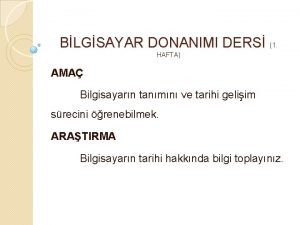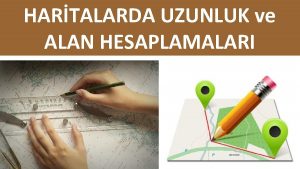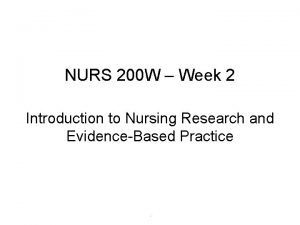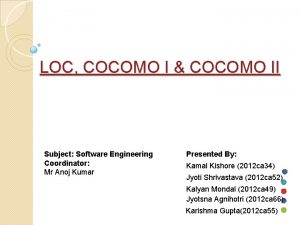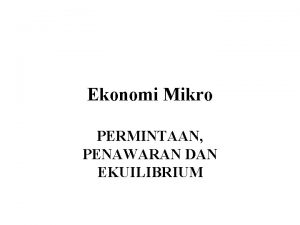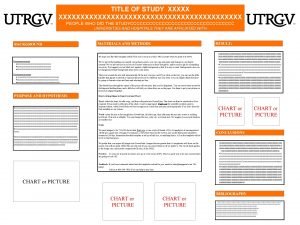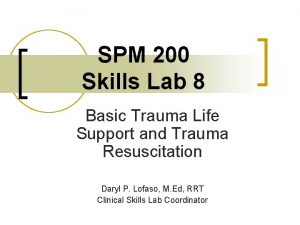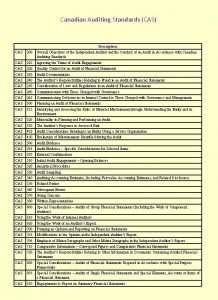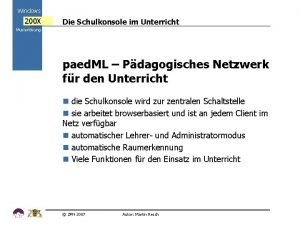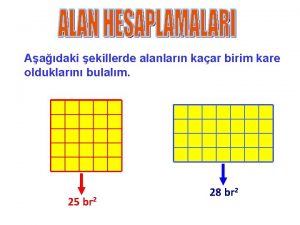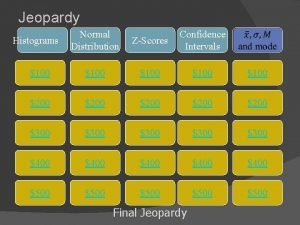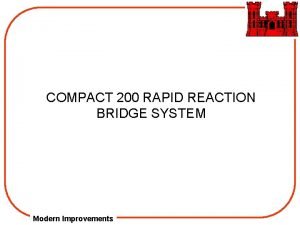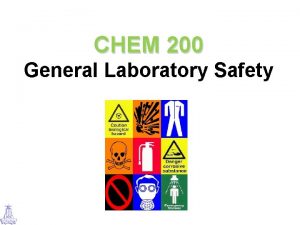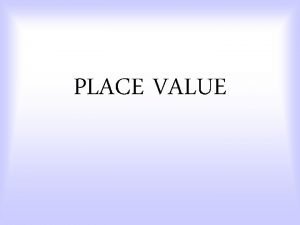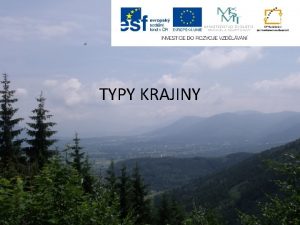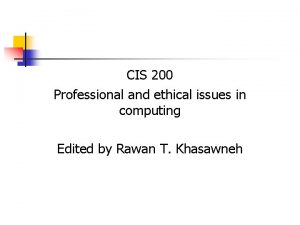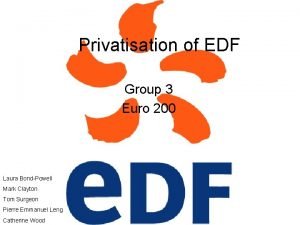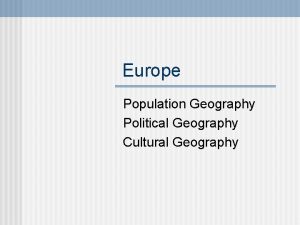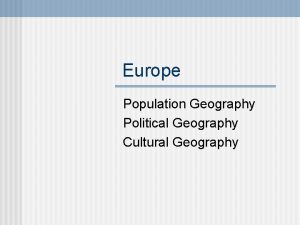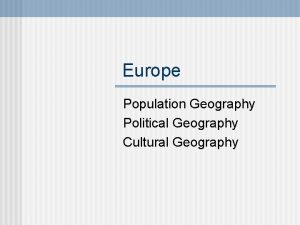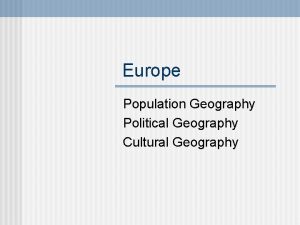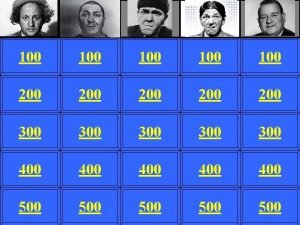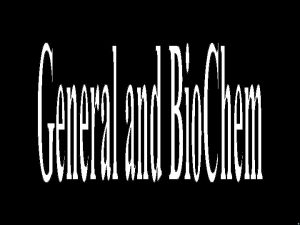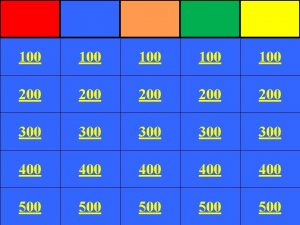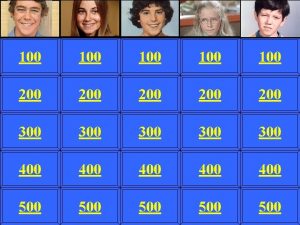Europe Geography 200 Dr Stavros Constantinou 1 MAJOR


































































- Slides: 66

Europe Geography 200 Dr. Stavros Constantinou 1

• • MAJOR GEOGRAPHIC QUALITIES Western extremity of Eurasia Lingering world influence High degrees of specialization Manufacturing dominance Numerous nation-states Urbanized population High standards of living 2

RELATIVE LOCATION • At the heart of the land hemisphere • Maximum efficiency for contact with the rest of the world • Every part of Europe is close to the sea. • Navigable waterways • Moderate distances 3

Location • Excluding Russia, Europe occupies only 3. 4% of the global surface (2, 284, 509 sq. miles). • Europe has a high-latitude northerly location. • Much of Europe lies north of the conterminous United States (north of the 49 th parallel). • Scotland lies in the same general latutude as Hudson Bay, and Norway has many communities located as far north as the northern mainland of Canada. 4

Location • Europe has an irregular outline, and is largely formed of peninsulas. • The main European peninsula is surrounded by: – First order peninsulas: Scandinavian, Iberian, Italian and Balkan peninsulas. • Second order peninsulas: Jylland (Jutland), Bretagne (Brittany), Cornwall, Peloponnesos (Peloponnesus) and others. • The complex mingling of land water has provided much of Europe with many opportunities for maritime activities. 5

Location Europe has 13 landlocked states: • • Andorra Austria Belarus Czech Republic Slovakia Hungary Liechtenstein • • • Luxembourg Switzerland Macedonia Moldova San Marino Vatican City Most places in Europe are no more than 640 km (400 miles) from the sea. By contrast, parts of the U, S, interior are more than 1600 km (1000 miles) from salt water. 6

Physical Geography -- Landforms 1. Western Uplands (Northwestern Highlands) • Hard, geologically ancient rock • Shaped by glaciation – thin soils, fjords • Scandinavia, Iceland, Scotland, Ireland, Brittany, Portugal Spain 2. North European Plain (Lowland) • Extensive region, a prominent feature of Europe; includes parts of France, Belgium, The Netherlands, Germany, Denmark, Poland, the Baltic states, Belarus and Russia • Rich in natural resources; coal, natural gas, potash, salt, iron ore, Largest cultivated region • Most densely populated of Europe's land regions 3. Central Uplands • Lower and less rugged than mountain regions, geologically older • Important deposits of metals and coal 4. Alpine Mountains • High mountains, rugged plateaus, steeply sloping land • The Alps, the Pyrenees, the Apennines, Dinaric Alps, and the Carpathians 7 • Highest peak is Mont Blanc – 4807 meters (15, 771 feet)

Europe’s Climate • Climatic controls – Warm currents (North Atlantic Drift) – Westerly winds – Differential of heating between land water • Europe’s climate is mild for its latitude – London’s average winter temperature is about the same as Richmond, VA, which is 1500 km (950 miles) farther south. – The British Isles, Scandinavia, the Netherlands, Germany and Poland lie north of the conterminous United States • Most lowlands receive 50 centimeters (20 inches) of precipitation per year: – Average in lowlands is 50 -89 centimeters – A few highland areas receive 102 (40 inches) – 254(100 inches) centimeters per year 8

Climate Types: • Marine West Coast (Cfb) • Humid subtropical (Cfa) • Mediterranean or Dry Summer Subtropical (Csa) • Humid continental (Dfa) • Subarctic (Dc, Dd) • Tundra (ET) • Undifferentiated Highlands (H) 9

Vegetation • Coniferous forest – Scandinavia Regions once forested but now mostly cleared for agricultural and industrial development: • Coniferous forest – Germany and Poland • Mixed deciduous forest – southern England, France, Czech Republic, Slovakia, Hungary, Romania and Bulgaria. Southern Europe's extensive oak forests have been reduced to maquis (brush) and garigue (low scrub). Macchia in Italy, chaparral in California. Reforestation efforts are underway. 10

Soils • Generally acidic (Lime is added to balance acidity) • Low fertility (alfisols, inceptisols, histosols, spodosols and entisols) • Favorable soils: – Loess – central France and Poland – Mollisols – Danubian Plain 11

Natural Resources • Rich in a variety of mineral resources • Energy sources – coal and petroleum • Iron ore deposits – Sweden, Czech Republic, Alsace-Lorraine (France), English Midlands • Bauxite – Hungary, Greece • Lead -- Sweden • Zinc --Sweden • Scenery – tourist industry 12

River Systems • Rivers of Northern Europe – Swift in summer, frozen in winter – Important for generation of electricity – Limited use for navigation • Rivers of Central Europe – Most important river of Europe is the Rhine. • Carries more freight than any other river in the world. • Originates in Alpine mountain chains of central Europe and flows through Switzerland, Germany, France and The Netherlands • Rivers of Southern Europe – Of limited use for navigation because of dry summers and high water flow in winter and spring • Danube – Is the longest river in Europe, but is handicapped by site situation characteristics: • Rapids at middle course “iron gate” make navigation impossible • Flows through agricultural areas, rather than industrial 13 • Other important rivers: Thames (London); Rhone (Marseilles); Seine (Paris); Schelde (Antwerp); Elbe (Hamburg), Po (Italy).

Population Geography • Europe’s 2003 population was 582, 800, 778. • Generally highly literate and skilled. • Europe is the third largest population cluster, after East Asia and Southern Asia. • Extremely high population densities are found in western European countries, especially Belgium, the Netherlands and Luxembourg – Benelux. • Population densities are not as high in Eastern and Southern Europe. • Nordic Europe, with the exception of Denmark, is sparsely populated. 14

EUROPE’S CHANGING POPULATION Current characteristics of Europe’s population: § Falling share of the world’s population § Fertility is at an all-time low § Fewer young people § Smaller working age population § Boom & bust age-dependent § Immigration partially offsetting losses 15

Urban Geography • Europe is among the most highly urbanized regions of the world. • Europe's proportion of urban population has grown from 54% in 1950 to 73% in 2003. • Western European countries have a higher percentage of population living in cities than Eastern Europe. • The least urbanized • The most urbanized countries are: –Belgium – 97% –Iceland – 94% –United Kingdom – 90% –Germany – 86% –France --- 74% –Bosnia-Herzegovina – 40% –Albania – 46% –Moldova – 46% 16

Urban Geography The urban system of many European countries follows the law of the primate city. According to the law of the primate city, a country’s leading city is “disproportionately large and exceptionally expressive of national capacity and feeling. ” (Mark Jefferson, 1939). Examples: Ø Ø Ø Ø Paris personifies France London personifies the UK Amsterdam personifies the Netherlands Warsaw personifies Poland Athens personifies Greece Vienna personifies Austria Stockholm personifies Sweden 17

Urban Geography • The trend in European urbanization is toward U. S. style suburbanization. • European city-scapes differ from North American cities due to: – Long histories – Scarce land – Strong government control of urban land development • The internal spatial structure of the European metropolis consists of the central city and its suburban ring, as in London. 18

Urban Geography – The CBD contains the main concentration of business, government, shopping facilities and wealthiest residences. – Broad residential sectors radiate outward from CBD with considerable class differentiation. – European suburbs are high-density satellite towns or villages surrounded by open countryside that is heavily utilized for recreational purposes. 19

20

Cultural Geography • The cultural geography of Europe is very diverse and complex. • Europe is a cultural mosaic, based on language and religion. 21

Language Groups • Indo-European Family (Major group, detail in next slide) • Urallic Family – Finnic • Northwest (Finnish, Karelian, Estonian) • Lapp • Ugrian (Hungarian) • Altaic Family – Turkish, in Turkish foothold in Europe • Semitic Family – Maltese, spoken on island of Malta • Basque Family – spoken by the Basques of Southwestern France and Northern Spain 22

Indo-European Family of Languages • Teutonic (Germanic) – English, German-Dutch (Dutch, Flemish and German) and Scandinavian (Swedish, Norwegian, Danish and Icelandic). • Romanic (Latin) – French (French and Walloon), Spanish (Castilian and Catalan), Portuguese (Portuguese and Galician), Italian (Italian and Sardinian), Romansch (Rhaeto. Romanic), Romanian (Romanin and Vlakh). Romania, an outlier of the Roman empire, managed to retain its Romance language. • Slavic – Western Slavic (Polish, Czech and Slovak), Eastern Slavic (Russian, Ukrainian, Byelo-Ruthenian), Southern Slavic (Slovene, Serbo-Croat, Bulgarian) • Baltic – Latvian and Lithuanian • Illyrian -- Albanese • Hellenic -- Greek • Celtic – Irish, Gaelic, Welsh, Breton 23

Religion • The predominant religion in Europe is Christianity. • Islam is the predominant religion of Albania, and is the religion of many immigrants to northwestern Europe from the Middle East and North Africa. • Religion as a unifying (centripetal) cultural force has been unable to overcome the disunifying (centrifugal) force of nationalism in Europe. 24

Religion • Christians number 558, 729, 000 or 76. 6% of a total European population of 729, 406, 000. – Roman Catholicism dominates in southern Europe, Poland eastern Germany. 286, 124, 000 or 39. 2% of total European population. – Eastern Orthodoxy is the predominant faith in eastern Europe and Greece. 158, 775, 000 or 21. 8% of Europe’s population. – Protestantism (especially Lutheran churches) is the major religion in northern and northwestern Europe. 85, 924, 000 or 11. 8% of the population. – Anglicanism (Episcopalian) number 25, 632, 000 or 3. 5% of Europe's population. – Non Christians: • Islam: 31, 401, 000 or 4. 3% of the total population • Judaism: 2, 530, 000 or 0. 3% of the total population 25

Economic Geography – Primary Sector of Production • Agriculture – High degree of commercialization – Dairy farming and livestock farming – Specialized subtropical crops in Mediterranean Europe. – Major crops • Cereals, with wheat the leading cereal grain • Rye – Germany and Poland • Corn (maize) – Danube plains of Hungary, Romania and Yugoslavia, the Po river valley of Northern Italy and the southwestern lowland of France. • Oats and barley • Irrigated rice 26

Economic Geography – Primary Sector of Production • Fisheries – High degree of commercialization – North sea countries and Iceland – Dogger Bank in the North Sea is a famous fishing ground. – Norway is the European leader in quantity of fish caught. • Europe depends heavily on food imports. It is self-sufficient in milk, potatoes and rye. It imports wheat, corn, oil cake, soybeans, vegetable fats and oils, chilled and frozen meats, cane sugar, cocoa, coffee and tobacco; fibers (cotton and wool predominantly) and natural rubber. 27

Economic Geography – Secondary Sector of Production • Europe produces a wide range of industrial goods, from the most basic to the most technologically advanced. • Globalization has caused major changes in the industrial sector. • Some famous European products are: – – – – Swiss watches English woolens Scotch whiskeys German porcelain and cameras Bohemian glassware Irish linens French wines, brandies and liqueurs 28

Major Industrial Regions of Europe The “Four Motors of Europe” are: 1. Southeastern France’s Rhone-Alpes region (anchored by Lyon). 2. Northern Italy’s Lombardy (anchored by Milan). 3. Northeastern Spain’s Catalonia (anchored by Barcelona). 4. Southern Germany's Baden-Württemburg (anchored by Stuttgart). Other important European industrial regions: • Sweden: • Switzerland: • Poland: • Austria: • Italy: Venice • Spain: Bilbao • Ukraine: Donbas 29

SPATIAL INTERACTION • Movement across geographic space • Involves contact of people in two or more places for the purposes of exchanging goods or ideas • Principles – Complementarity – Transferability – Intervening opportunity 30

COMPLEMENTARITY • Two places, through an exchange of goods, can specifically satisfy each other’s demands. • One area has a surplus of an item demanded by a second area. Germany Italy 31

TRANSFERABILITY • The ease with which a commodity may be transported or the capacity to move a good at a bearable cost • Rivers, Mountain Passes, Road networks • Advances in transportation technology 32

INTEREVENING OPPORTUNITY • The presence of a nearer source of supply or opportunity that acts to diminish the attractiveness of more distant sources and sites Would Austrian beer be cheaper to import into Italy? 33

The British Isles: Four regions The South – London is the center. • London is Europe’s largest city (7, 650, 944 people) and the world’s ninth largest • Metropolitan London has a conurbation area of 12, 000 inhabitants, one of the worlds largest. • 20, 000 of the 59, 800, 000 total UK population (33. 4%) live in the South region. • The Green Belt (1944) is a zone for recreation and farming set aside to surround London in order to stem and channel the city’s vast urban sprawl 34

The British Isles: Four regions • The North (North of Bristol-Norwich line) – Dominated by economic stagnation following the decline of the industrial base of the country. – 50, 000 jobs were lost in the 1980 s. – Revitalization efforts have met with limited success. Long term impact uncertain. – Suffering cities: • • • Manchester Leeds Sheffield Birmingham Liverpool 35

The British Isles: Four regions • Scotland Wales – Rugged, remote highland territories. – Southern Wales (Cardiff-Swansea) is a depressed industrial region. – Scotland’s industrialization focused on the Clyde and Firth of Forth because of nearby coal, iron ore and the excellent port of Glasgow. 36

The British Isles: Four regions • Northern Ireland – Part of the United Kingdom – Capital city Belfast – Comprises six counties: Antrim, Armaugh, Down, Fermanagh, Londonderry, and Tyrone. – Historical religious conflict between the Catholics and Protestants – Religious make-up: • • Catholic Presbyterian Church of Ireland Methodist 35% 29% 24% 5% – Devolution (1976): the disintegration of a nation state as a result of reviving regionalism; the redistribution of authority and the restructuring of the political framework of the 37 United Kingdom; among the proposals under consideration

The Republic of Ireland • The Republic of Ireland is about one-half the size of Arkansas. • Capital city is Dublin. • Geographically, the Irish Central Plain surrounded to the north, south and west hills and low, rounded mountains. • Largely agricultural, 65% of land use is agricultural. • Marked rural poverty • Problem of depopulation. 38

France • Second largest European country (after Ukraine) with an area about 80% the size of Texas. • Shaped like an irregular hexagon. • 35% of land use is agricultural. • Geographic features: – – Massif Central The Alps (Mont Blanc, 4807 m. or 15, 771 ft. ) The Pyrenees The Jura Mountains 39

Paris, France • Paris is a classic primate city. Population 2, 152, 423 inhabitants; metro area population 10, 275, 000. • It has an excellent site and situation. – Founded on Ile de la Cité on the Seine, a place easy to defend. – Located in the center of a large and prosperous agricultural area. – The focal point of the confluence of several navigable rivers, the Marne, Yonne, and Oise, with the Seine. • Specialized, small scale luxury industries 40

Germany • Following reunification, Germany has a land area of 356, 774 sq. km. (134, 830 sq. mi. ) and a population of 82, 400, 000 in 2002. • Accessible location due to the navigability of the Rhine and Elbe rivers. • Landforms: – The North German Plain: • Effect of glaciation • Moraines • Terminal moraines east of the Elbe river – The varied terrain of Central and Southern Germany: • Bavarian Alps, Bohemian Forest, Ore Mountains (Erzegebirge), Uplands of Saxony, Black Forest, Oden Forest, Rhine Upland – The Harz Mountains and the Thuringian Forest – The low Jura Upland at the south. 41

Germany: Climate, Soils and Vegetation • Maritime influences prominent in northwest; increasingly continental influences toward the east and south. • Soils higher than average in fertility. Loess and alluvial soils in the Upper Rhine Plain. • Large outputs of lumber, wood pulp. Paper and other forest derived products. 42

Germany: Resources • Important industrial minerals: – 11. 4% of global production of coal. • Ruhr • Saxony • Silesia – 20. 5% of world production of potash. – 5. 5% of the world’s crude steel. – 4. 9% of world aluminum. – 2. 0% of the world’s pyrites. 43

Benelux Countries • Belgium + Netherlands + Luxembourg • Example of making the best of small areas and small populations. High standard of living, high per capita incomes. • Supranationalism: 44

The Netherlands • Natives of the Netherlands are known as the Dutch. • Agricultural land of the Netherlands has been reclaimed from the sea and is called polder. • Dutch farming is very intensive and highly specialized, for example tulips and other flowers. • Traditionally, the Dutch have been a seafaring nation with a significant colonial empire in Southeast Asia (Indonesia). • Rotterdam is the world’s largest port city in terms of tonnage handled because it serves the hinterland of the Rhine river. – Rotterdam is a generative city because of the complementary relationship it has with its hinterland. – Rotterdam is a break-in-bulk point for much of the Rhine traffic. 45

Belgium • Belgium is inhabited by Dutch speaking Flemings in the North. • The southern inhabitants are French speaking Walloons. • Belgium is officially bilingual. • Belgium is the hub of European supranationalism. 46

Mountain Europe: Switzerland Austria • Both are landlocked countries framed by the Alps. • Both capitalize on their environments as winter resort destinations for the rest of Europe and the world. • While having similar environments, their historical experiences are quite different. 47

Switzerland • Switzerland has been independent and pursued a policy of strict neutrality since 1815. • Switzerland is the geographical center of Western Europe and straddles three streams of cultural and linguistic influence – Italian, French and German. 64% speak German, 18% speak French, 12% speak Italian and 6% speak Romansch (an ancient dialect of Latin). • Population: 7, 200, 000; land area ½ that of Austria. • Switzerland is an example of a country that has maximized a mountainous, limited resource base to produce the second highest per capita income -- $39, 980 in 2000. • 92% of Swiss are employed in non-agricultural pursuits, including precision mechanization and electronics, banking and finance, and tourism. • Swiss farmers practice transhumance or vertical nomadism, the seasonal movement of people and animals from lowland to highland environments in search of pasture. 48

Austria • Austria is a vestige of the Austro-Hungarian Empire. • Population: 8, 100, 000, includes southern Germans, Balkan people, Magyars and many other ethnic groups. • Framed by the Danube River valley in the north and the Alps in the south. • Austria is a fraction of its former size. After WW I Austria was carved into independent Hungary, Yugoslavia, Bulgaria and Romania. 49

Nordic Europe • The world’s northernmost group of states: Denmark, Norway, Sweden, Finland, Estonia, Iceland. • Poor relative location – on the way to nowhere. • Except for Denmark, Norden is separated by water from the rest of Europe. • Denmark and southern Sweden are part of the North European Lowland an exception to the bleak Scandinavian rule. • Climatic conditions are rather severe for most of the area. • In recent years severe environmental pollution has been a problem, especially in southern Norway, which receives more acid rain than it produces via sulfur emissions. • In language, Danish, Swedish and Norwegian are mutually intelligible; Icelandic belongs to the same family; Finnish is totally different. 50

Nordic Europe: Resources • Sweden possesses 2. 6% of the world’s deposits of iron ore. • Norway has discovered large deposits of petroleum and natural gas in the North Sea. • Geothermal energy is important in Iceland. • Hydroelectric power generation is important in Norway. • Forest products are important , especially for Finland Norway. • Fishing is important for Iceland • Norway has a large merchant marine fleet and rich seafaring tradition. 51

MEDITERRANEAN EUROPE • Six Countries: Portugal, Spain, Italy, Greece, Malta, Cyprus • A discontinuous region, lying on three peninsulas, two occupied singly by Greece and Italy, one shared by Spain and Portugal. • Separated by mountains and water from the Western European core. • Common cultural heritage dating from Greco-Roman times. • Mediterranean climate – dry summer subtropical – HOT - DRY SUMMERS – WARM/COOL - MOIST WINTERS 52

MEDITERRANEAN EUROPE: RESOURCES • Soils in Southern Europe are generally poor. • Vegetation: – Maquis (macchia): Many shrubs of medium height, comparable to chaparral in the U. S. – Garigue: Low vegetation less than one foot in height, frequently aromatic. • Mediterranean Europe is generally deficient in mineral wealth. Only scattered deposits of coal, , iron ore and bauxite. • Italy has great hydroelectric potential. • Recent gains in economic development and industrialization have been in the Po Valley (Italy); Barcelona (Spain) and around Lisbon (Portugal) and Athens (Greece). 53

ITALY • MOST POPULATED OF MEDITERRANEAN COUNTRIES • BEST CONNECTED TO THE EUROPEAN CORE • MOST ECONOMICALLY ADVANCED • DISPLAYS A SHARP NORTH/SOUTH CONTRAST (ANCONA LINE ) • MILAN – ITALY’S LARGEST CITY AND MANUFACTURING CENTER – ALSO THE COUNTRY’S FINANCIAL AND SERVICE -INDUSTRY CENTER 54

ITALY • ROME – FOUNDED ABOUT 3, 000 YEARS AGO – ATTAINED AN ESTIMATED POPULATION OF 1 MILLION < THE END OF THE 1 ST CENTURY AD – ONLY 30, 000 PEOPLE BY THE 13 TH CENTURY – BECAME ITALY’S CAPITAL IN 1870 – CURRENTLY HAS ABOUT 2. 6 MILLION PEOPLE • VATICAN CITY – AN ENCLAVE WITHIN ROME – THE HEADQUARTERS OF ROMAN CATHOLICISM – FUNCTIONS AS AN INDEPENDENT ENTITY 55

EASTERN EUROPE (REGIONAL IDENTIFIERS) • • EUROPE’S LARGEST REGION ADJOINS 3 OF 4 OTHER EUROPEAN REGIONS CONTAINS THE MOST COUNTRIES INCLUDES EUROPE’S LARGEST STATE -UKRAINE • INCORPORATES EUROPE’S POOREST COUNTRY -- ALBANIA • IN 1990, NONE OF ITS STATES COULD MEET THE CRITERIA FOR MEMBERSHIP IN THE EU • REACHES INTO THE RUSSIAN ZONE OF 56 INFLUENCE

KEY CONCEPTS • • • BALKANIZATION IRREDENTISM ETHNIC CLEANSING DEVOLUTION SHATTER BELT 57

BALKANIZATION • FROM THE VERB BALKANIZE, WHICH MEANS TO BREAK UP (AS IN A REGION) INTO SMALLER AND OFTEN HOSTILE UNITS • ORIGINATES FROM A MOUNTAIN RANGE IN BULGARIA • APPLIED TO THE SOUTHERN HALF OF EASTERN EUROPE, i. e. , THE BALKAN COUNTRIES OF THE BALKAN PENINSULA 58

UNDERLYING FORCES • CENTRIFUGAL FORCES – REFER TO FORCES THAT TEND TO DIVIDE A COUNTRY • Religious, linguistic, ethnic, or ideological differences • CENTRIPETAL FORCES – FORCES THAT UNITE AND BIND A COUNTRY TOGETHER • A strong national culture, shared ideological 59 objectives, and a common faith

IRREDENTISM • A POLICY OF CULTURAL EXTENSION AND POLITICAL EXPANSION AIMED AT A NATIONAL GROUP LIVING IN BORDER A NEIGHBORING ADJUSTMENT COUNTRY RIVER & BORDER MINORITY POPULATION A A B COUNTRIES 60

ETHNIC CLEANSING • REFERS TO THE FORCIBLE OUSTER OF ENTIRE POPULATIONS FROM THEIR HOMELANDS BY STRONGER POWERS BENT ON TAKING THEIR TERRITORIES BORDER COUNTRIES MINORITY POPULATION A B A 61

DEVOLUTION • THE PROCESS WHEREBY REGIONS WITHIN A STATE DEMAND GAIN POLITICAL STRENGTH AND GROWING AUTONOMY AT THE EXPENSE OF THE CENTRAL GOVERNMENT 62

COUNTRIES FACING THE BALTIC SEA • POLAND – – A CLASSIC NATION-STATE TRADITIONALLY AGRARIAN - WHEAT POST WWII INDUSTRY - SILESIA WARSAW - PRIMATE CITY • LITHUANIA – LOST INDEPENDENCE IN 1940, REGAINED IN 1991 – KALININGRAD - A RUSSIAN EXCLAVE • LATVIA – SIMILAR HISTORY TO LITHUANIA – CONSTITUTE BARE MAJORITY IN OWN COUNTRY • BELARUS: RUSSIA’S CLOSEST ALLY 63

THE LANDLOCKED CENTER • CZECH REPUBLIC – The regions most “westernized” country. – PRAGUE- a classic PRIMATE CITY • SLOVAKIA – THE LEAST DEVELOPED, MOST RURAL PART OF “CZECHOSLOVAKIA” • HUNGARY – A NATION-STATE OF 10 MILLION – BUDAPEST- A CLASSIC PRIMATE CITY 64

COUNTRIES FACING THE BLACK SEA • BULGARIA: LIBERATED BY RUSSIA IN 1878 • ROMANIA: A FORMER ROMAN PROVINCE; RAW MATERIALS (COAL, IRON ORE, OIL, NATURAL GAS) • MOLDOVA: AGRICULTURAL • UKRAINE: LARGEST AND MOST POPULOUS; AGRICULTURAL AND NATURAL RESOURCES AVAILABLE 65

COUNTRIES FACING THE ADRIATIC SEA • SLOVENIA: FIRST TO SECEDE; ETHNICALLY MOST HOMOGENEOUS • CROATIA • BOSNIA: CENTRALLY POSITIONED • SERBIA: LARGEST AND MOST POPULOUS • MACEDONIA: 65% MACEDONIAN, 21% ALBANIAN • SERBIA-MONTENEGRO: INCLUDES SERBIA, KOSOVO, VOJVODINA, AND MONTENEGRO • ALBANIA: REMNANT OF TURKISH OTTOMAN EMPIRE; 70% MUSLIMS; LOWEST ECONOMIC RANKING IN EUROPE 66
 Stavros constantinou
Stavros constantinou 200 + 200 + 300
200 + 200 + 300 Stavros afionis
Stavros afionis Stavros thomadakis
Stavros thomadakis 200+400+600
200+400+600 100 + 200 300
100 + 200 300 200+200+300
200+200+300 200+200+100
200+200+100 200+200+100+100
200+200+100+100 100 200 300
100 200 300 What are the 5 major peninsulas in europe
What are the 5 major peninsulas in europe Europe landforms
Europe landforms What strategic waterway is south of the iberian peninsula
What strategic waterway is south of the iberian peninsula The physical geography of northern europe
The physical geography of northern europe Sweden physical features
Sweden physical features Human geography of eastern europe
Human geography of eastern europe How do mountains and plains define eastern europe?
How do mountains and plains define eastern europe? Vocabulary activity 12 cultural geography of europe
Vocabulary activity 12 cultural geography of europe Chapter 13 human geography of europe
Chapter 13 human geography of europe Europe's geography cloze notes
Europe's geography cloze notes What countries in northwestern europe
What countries in northwestern europe Geography major
Geography major Ap human geography political geography test
Ap human geography political geography test Ap human geography political geography frq
Ap human geography political geography frq 5 themes of geography ap human geography
5 themes of geography ap human geography 100 200 300 400
100 200 300 400 Fractions equivalent to 100/200
Fractions equivalent to 100/200 Radical 200 simplified
Radical 200 simplified 200+160+120
200+160+120 Un tanque de 200 litros se llena en 3 minutos
Un tanque de 200 litros se llena en 3 minutos Ibuprofene 200
Ibuprofene 200 Visualize acres
Visualize acres Microrrelatos ejemplos
Microrrelatos ejemplos Philco transac s-200 ibm 1401
Philco transac s-200 ibm 1401 Geometry (polygons) jeopardy
Geometry (polygons) jeopardy 1/200 çizgi ölçek
1/200 çizgi ölçek What is a good pico question
What is a good pico question T-ptd 200
T-ptd 200 Cocomo i
Cocomo i Qdx=200-2px qsx=-100+4px
Qdx=200-2px qsx=-100+4px Random 1-200
Random 1-200 Listen to 200% xxxxx xxxxx (xxxxx xxxxxx xxxxx)
Listen to 200% xxxxx xxxxx (xxxxx xxxxxx xxxxx) Spm 200
Spm 200 Xxxxx
Xxxxx Express 602200 in scientific notation.
Express 602200 in scientific notation. Quelle est la nature de ce document
Quelle est la nature de ce document Precitech nanoform 200
Precitech nanoform 200 Nitie fire alarm panel
Nitie fire alarm panel Cas audit standards
Cas audit standards Schulkonsole
Schulkonsole Alanı 12 birim kare olan dikdörtgen
Alanı 12 birim kare olan dikdörtgen Z score formula
Z score formula Mabey compact 200
Mabey compact 200 Ccna 200-301 ppt slides download
Ccna 200-301 ppt slides download Chem 200
Chem 200 For adult xxx
For adult xxx 40 tens = hundreds
40 tens = hundreds Krajina s nadmořskou výškou nad 200 m
Krajina s nadmořskou výškou nad 200 m T-ptd 200
T-ptd 200 200% xxxxxx x
200% xxxxxx x Toll road 200 maryland
Toll road 200 maryland 200 word challenge
200 word challenge Gcf of 20 and 30
Gcf of 20 and 30 Cis 200
Cis 200 Compresseur 200 bars tir sportif
Compresseur 200 bars tir sportif Eurázia mapa
Eurázia mapa Euro 200 final
Euro 200 final
